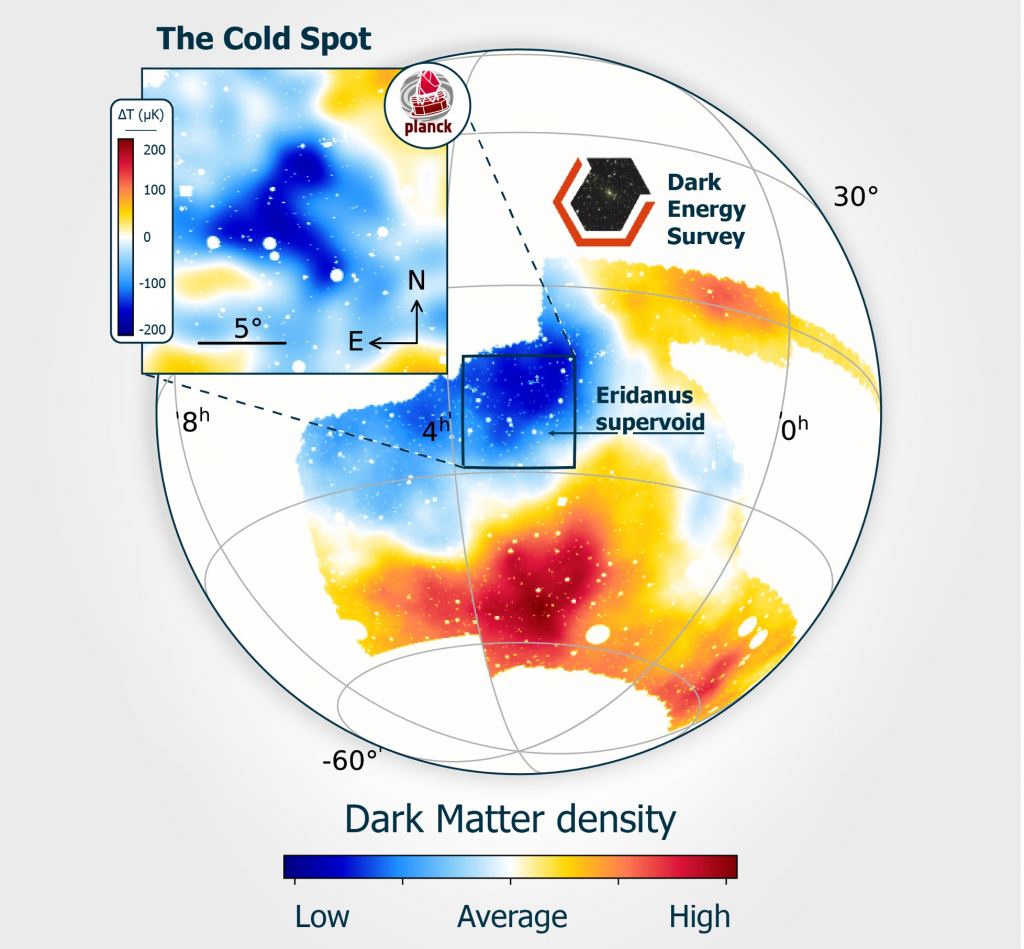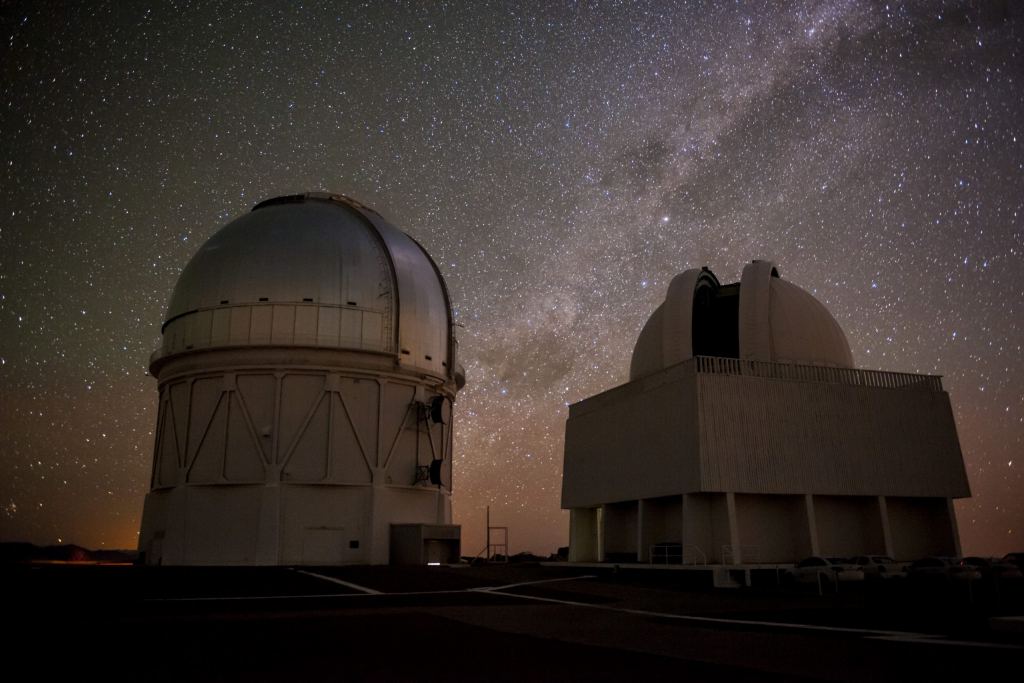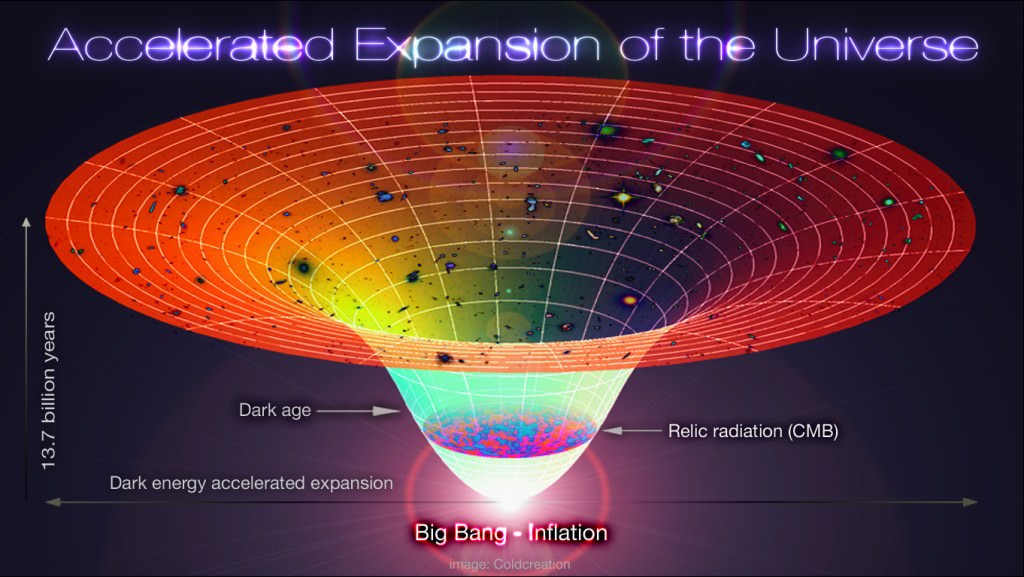According to our current Cosmological models, the Universe began with a Big Bang roughly 13.8 billion years ago. During the earliest periods, the Universe was permeated by an opaque cloud of hot plasma, preventing atoms from forming. About 380,000 years later, the Universe cooled to a temperature of about -270 °C (-454 °F), which converted much of the energy generated by the Big Bang into light. This afterglow is now visible to astronomers as the Cosmic Microwave Background (CMB), first observed during the 1960s.
One peculiar characteristic about the CMB that attracted a lot of attention was the tiny fluctuations in temperature, which could provide information about the early Universe. In particular, there is a rather large spot in the CMB that is cooler than the surrounding afterglow, known as the CMB Cold Spot. After decades of studying the CMB’s temperature fluctuations, a team of scientists recently confirmed the existence of the largest cold spots in the CMB afterglow – the Eridanus Supervoid – might be the explanation for the CMB Cold Spot that astronomers have been looking for!
The research was conducted by the Dark Energy Survey (DES), an international team of researchers made up of 300 scientists from 25 institutions in seven countries. The research team was led by András Kovacs, an astrophysicist with the Instituto de Astrofísica de Canarias (IAC) and the University of Laguna in Tenerife, Spain. The results of their study, titled “The DES view of the Eridanus supervoid and the CMB cold spot,” appeared in the Monthly Notices of the Royal Astronomical Society on December 17th, 2021.
Why So Cold?
Since the discovery of the CMB, multiple missions have been mounted to study it in greater detail. This includes the Soviet RELIKT-1 mission aboard the Prognoz 9 satellite (launched in July 1983) and the NASA Cosmic Background Explorer (COBE) mission. The latter results were published in 1992 and revealed acoustical oscillations in the plasma (the first “acoustic peak”) that correspond to large-scale density variations in the early Universe created by gravitational instabilities.
A second acoustic peak was not detected with confidence until the Wilkinson Microwave Anisotropy Probe (WMAP) was deployed in 2001, followed by a third peak before the mission concluded in 2010. Since then, many more missions have monitored the CMB to place tighter constrictions on temperature differences and small-scale variations in density. The most notable of these is the ESA’s Planck spacecraft (2009-2013), which has provided the most detailed CMB temperature maps to date.
Unfortunately, these maps did not resolve the mystery of the CMB Cold Spot, a large region that is slightly colder (70 µK or 0.00007 Kelvin) than the cosmic background: approx. 2.7 K (-270 °C; -455 °F). Therefore, the enduring mystery of this anomaly has spawned all manner of explanations, ranging from an artifact in the data to the possible existence of a parallel Universe bumping into ours!
Eridanus Supervoid
Cosmic voids refer to the vast regions of space that lie between galaxies and galaxy clusters that (along with Dark Matter) make up the large-scale structure of the Universe. These voids are defined by their relative lack of “normal matter” like galaxies or dust and gas – the intergalactic medium (IGM) – and less dark matter than what’s observed in galaxy clusters. Whereas these structures are held together by the force of mutual attraction (gravity), they are also expanding because of a theorized but undetected force (Dark Energy).
 The Cold Spot resides in the constellation Eridanus in the southern galactic hemisphere. The inset shows the microwave temperature map of this patch of sky, as mapped by the ESA Planck satellite. The main figure depicts the map of the dark matter distribution created by the DES team. Credit: Gergö Kránicz & András Kovács
The Cold Spot resides in the constellation Eridanus in the southern galactic hemisphere. The inset shows the microwave temperature map of this patch of sky, as mapped by the ESA Planck satellite. The main figure depicts the map of the dark matter distribution created by the DES team. Credit: Gergö Kránicz & András Kovács
Located 1.8 billion light-years away in the constellation Eridanus, the Eridanus Supervoid was a theorized underdensity where matter concentrations were 30% less than the surrounding galactic region. The center of this void is located 2 billion light-years from Earth, making it the dominant underdensity in our galactic neighborhood. Using data collected by the Dark Energy Survey (DES), the team created a map of Dark Matter (DM) in the same direction as the CMB Cold Spot.
The team also used the mass of this DM as a gravitational lens, where the powerful gravity of a massive object amplifies and alters the path of light coming from behind it. Co-author Niall Jeffrey, an astrophysicist with the Université de Paris and the University College London, helped construct the DM map. “This map of dark matter is the largest ever such map that’s been created,” he said in a Fermilab press release. “We have been able to map out dark matter over a quarter of the Southern Hemisphere.”
Combined with previous observations of the underdensity of galaxies in the region, the new maps also confirmed an underdensity in terms of Dark Matter in the same area. This effectively confirms a Supervoid in the Eridanus constellation that corresponds to what was theorized. This void could be the reason for the CMB Cold Spot, a potential resolution for what these voids say about the evolution of the cosmos, and an indication of how they are still affecting cosmic evolution today.
Implications for Dark Energy
This latest research is also significant when it comes to another enduring mystery, which is the existence and nature of Dark Energy. As noted, this refers to the mysterious force that counteracts gravity and is responsible for driving cosmic expansion. Originally predicted by Einstein’s Theory of General Relativity, the expansion of the cosmos was first demonstrated by Edwin Hubble (namesake of the Hubble Space Telescope) during the 1920s.
 Observations for the Dark Energy Survey were carried out using the Blanco Telescope in the Andes mountains of Chile. Scientists used its data to create a map of dark matter in the region of the sky that contains the Eridanus supervoid and CMB Cold Spot. Credit: Reidar Hahn, Fermilab
Observations for the Dark Energy Survey were carried out using the Blanco Telescope in the Andes mountains of Chile. Scientists used its data to create a map of dark matter in the region of the sky that contains the Eridanus supervoid and CMB Cold Spot. Credit: Reidar Hahn, Fermilab
By the 1990s, the mystery deepened as surveys like the Hubble Deep Fields revealed that cosmic expansion had been accelerating during the last 3 billion years. This gave rise to theories that something was driving this expansion, be it an undiscovered force or some modification of General Relativity. By conducting large-scale surveys of the Universe, scientific collaborations like DES hope to see the influence of Dark Energy directly and thereby measure its properties.
The presence of cosmic voids between galactic clusters indicates that this ongoing tug-of-war between gravitational forces and expanse causes some voids to become deeper. Said co-author Garcia-Bellido, a cosmologist from IFT-Madrid:
“Photons or particles of light enter into a void at a time before the void starts deepening and leave after the void has become deeper. This process means that there is a net energy loss in that journey; that’s called the Integrated Sachs-Wolfe effect. When photons fall into a potential well, they gain energy, and when they come out of a potential well, they lose energy. This is the gravitational redshift effect.”
Lambda-CMB
However, this study does not resolve the overall discrepancy between the standard cosmological model and the observed variations in temperature with the CMB Cold Spot. This model is known as the Lambda Cold Dark Matter (LCDM) model, which predicts that DM is composed of large, slow-moving particles (“cold”) that are driven apart by an expansionary force (DE), represented by the parameter L.
 Diagram showing the Lambda-CBR Universe, from the Big Bang to the current era. Credit: Alex Mittelmann/Coldcreation
Diagram showing the Lambda-CBR Universe, from the Big Bang to the current era. Credit: Alex Mittelmann/Coldcreation
In short, the results confirm the existence of the Eridanus Supervoid but cannot conclusively attribute the Cold Spot to the supervoid’s effect on CMB photons. As Kovacs summarized:
“Having the coincidence of these two individually rare structures in the cosmic web and in the CMB is basically not enough to prove causality with the scientific standard. It is enough of a new element in the long history of the CMB Cold Spot problem that after this, people will at least be sure that there is a supervoid, which is a good thing because some people have debated that. The trouble is that typical alternative models cannot explain this discrepancy either, so if true, it might mean that we do not understand something very deep about dark energy.”
This may be the greatest asset of this latest research, which is that it may help to focus future research efforts. If the Lambda-CDM model is correct, then the CMB Cold Spot may be an extreme anomaly that coincidentally has a massive supervoid in front of it. If it’s incorrect, then the extent to which CMB photons are redshifted by intervening supervoids – aka. the Integrated Sachs-Wolfe effect (ISW) – is stronger than expected. For the latter scenario to be true, the energy density of the Universe has to be dominated by something other than “normal matter.”
This is one of the central pillars of LCDM and predominant theories about DM and DE, which state that DM accounts for 85% of matter in the Universe while DE accounts for 72% of the total mass-energy density. Alas, this mystery will require future studies and surveys before scientists can confidently say which scenario is true. Luckily for them, there are several observatories that will be conducting this research in the near future.
Some examples include NASA’s James Webb Space Telescope (which just reached L2), the Nancy Grace Roman Space Telescope (Hubble’s successor), and the ESA’s Euclid and Ariel observatories. With these and other sophisticated instruments peering deeper into space (and farther back in time), the mysteries of the “Dark Universe” won’t remain mysterious for long.
Further Reading: Fermilab

